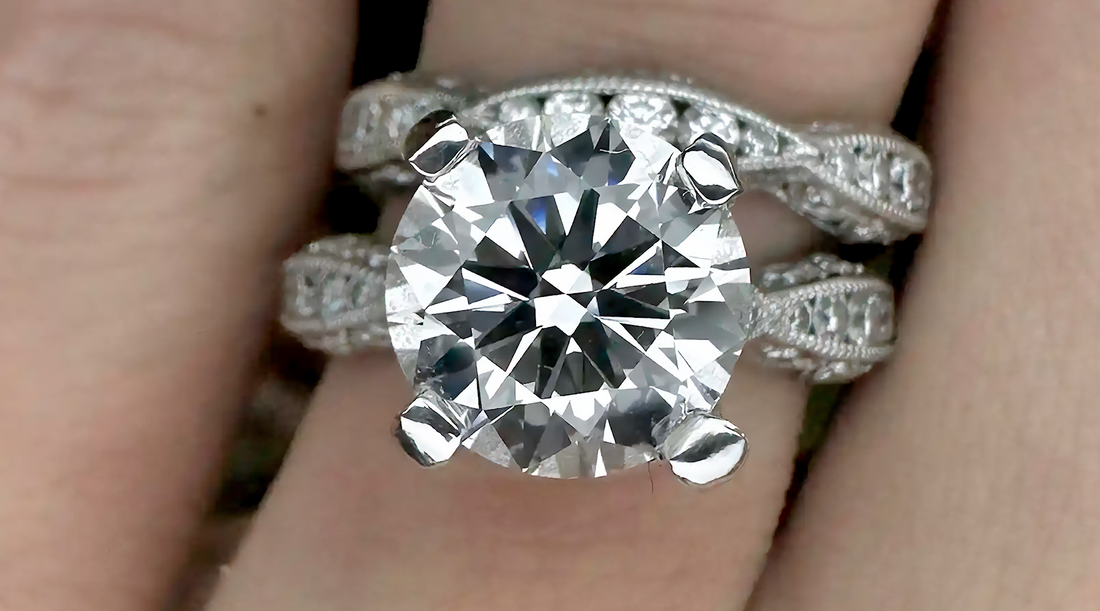
Lab Grown Diamond vs Moissanite: A Comprehensive Comparison
In today's world, ethical and eco-friendly choices are essential when purchasing luxury items like gemstones. If you're seeking a stunning, guilt-free gem, you know of two top contenders: lab-grown diamonds and moissanite. While both sparkle brilliantly, key differences set them apart.
This article will provide an in-depth comparison of lab-grown diamonds and moissanite, including their histories, production methods, optical properties, costs and more. We'll explore topics like “what is the refractive index” and “resale value of diamonds” to help inform your decision between these dazzling gemstones. By the end, you'll be equipped to choose the right gem for your needs and budget.
What Are Lab Grown Diamonds?
Lab-grown diamonds are chemically identical to mined diamonds, but they are created above ground in controlled lab conditions. First successfully produced in the 1950s, their technology has rapidly advanced to offer an ethical, eco-friendly diamond alternative.
How They Are Made
Lab diamonds are produced through two key methods that replicate the extreme heat and pressure under which natural diamonds form:
- High Pressure High Temperature (HPHT)
- Chemical Vapor Deposition (CVD)
These processes fuse pure carbon atoms into flawless diamonds in just weeks rather than billions of years. Advancements also allow for bold “fancy colored diamonds” like vivid yellows.
Ethical and Eco-Friendly
By avoiding diamond mines, lab-grown diamonds prevent associated environmental and social harms. Their production is more sustainable, using less water and energy compared to mining. For consumers wanting “conflict free” gems, they provide peace of mind.
Lab Grown Diamond Rings
While lab diamonds suit any jewelry, engagement rings and wedding bands are especially popular uses. Couples can opt for a stunning “center stone” diamond solitaire or accent stones surrounding a central lab diamond. Even high jewelry houses like Tiffany now offer lab diamond rings.
What is Moissanite?
First discovered in 1893 by Henri Moissan, moissanite is incredibly rare in nature. While examining rock samples, Moissan mistook the gemstones for diamonds. Later identified as silicon carbide, the mineral was fittingly named “moissanite” to honor his discovery.
Today, quality moissanite is artificially created in labs through advanced manufacturing processes. The resulting gems showcase exceptional brilliance and durability that exceeds even diamond. As an affordable, ethical alternative to diamond, moissanite makes a compelling jewelry choice.
Naturally Occurring
Moissanite is primarily composed of silicon carbide (SiC), originally formed from star dust. Natural moissanite remains scarce, located in limited meteor crater sites.
Lab Created
With innovations by companies like Cree Research, high-quality silicon carbide crystals can be mass-produced. This allows moissanite to be a widely available, economical diamond alternative.
Dazzling Optical Properties
What truly sets moissanite apart is its unmatched optical performance. With a higher refractive index than diamond, moissanite showcases more brilliance and fire. The resulting rainbow-like flashes emanate from within the stone. No other gemstone replicates this level of perfection.
Exceptional Durability
On the Mohs Scale, moissanite earns an impressive 9.25 rating, compared to diamond's perfect 10. This makes moissanite suitable for all jewelry purposes. The lab created gems have few inclusions, guaranteeing enduring sparkle.
By understanding moissanite’s rich history and advanced engineering, you can better appreciate why it makes such a disruptive gemstone. Next, we’ll explore how moissanite and lab diamonds differ in key areas.
Key Differences
Now that we've covered the backgrounds of moissanite and lab-grown diamonds, let’s explore key areas where they differ. Paying attention to these distinctions will ensure you select the right gemstone for your needs.
Price
One major difference is cost. On average, moissanite is around 40% more economical than similar quality lab diamonds. For example, a 1-carat round cut lab diamond retails around $2,600, compared to $1,500 for moissanite.
Simpler cuts like princess or oval shapes can be even more affordable in moissanite. For the budget-conscious shopper, moissanite provides a real value advantage while delivering considerable sparkle.
Refractive Index Impact
We touched on refractive index before— that measure that controls how light interacts with a gemstone. With a higher value, moissanite can showcase more brilliance and fire, especially in certain lighting conditions. For those desiring maximum sparkle, moissanite is tough to beat.
Some prefer the more understated fire of diamonds. So consider whether you want a showstopping stone or something more classic.
Color Range and Clarity
Diamonds come in a broad spectrum of elegant colors. Moissanite, on the other hand, is limited to near-colorless ranges, with slight green, gray or yellow secondary hues possible.
Moissanite virtually eliminates inclusions, guaranteeing exceptional clarity not matched by diamonds. Eye-clean diamonds do exist, but you’ll pay more for higher clarity levels.
Investment Value
Diamonds have a proven track record while maintaining value over decades. As an appreciating asset, they hold their worth and can be resold without substantial depreciation.
Moissanite, as a relative newcomer, has less resale data available. While still durable and beautiful long-term, moissanite may not carry the same legacy value. For some buyers, a diamond’s enduring cache provides peace of mind.
Symbolic Meaning
This leads to the deeper symbolic significance attached to diamonds, especially in jewelry. Concepts of eternal commitment and everlasting bonds are intrinsically linked to the diamond tradition. Moissanite lacks this same emotional weight.
So while moissanite provides plenty of visual wow factor, diamonds carry stronger sentimental meaning. For events like engagements, this extra significance could tip the scales.
Everyday Fashion Jewelry
For non-ceremonial jewelry purposes, moissanite offers practicality advantages. With durable silicon carbide construction, moissanite withstands daily use with ease. Large statement pieces can serve as bold fashion accents without the diamond price tag.
Making Your Choice
Analyzing the nuances between diamonds and moissanites ultimately empowers you to align with your personal preferences. By establishing your priorities around elements like appearance, cost, symbolic value and intended use, the superior choice will emerge based on what matters most to you.
If dazzling sparkle trumps all else, moissanite packs an unrivaled punch. Those desiring an understated elegance may prefer diamond's softer brilliance. Planning to pass down a meaningful heirloom? Diamond still reigns with its legacy allure.
